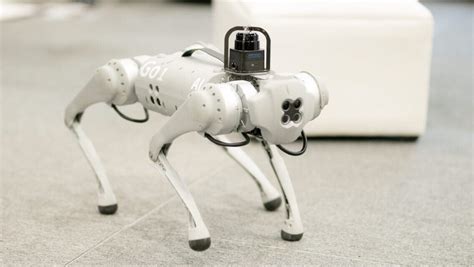Introduction
The pet industry is undergoing a transformative revolution with the advent of artificial intelligence (AI) robot pets. These technologically advanced companions offer unique advantages that challenge the traditional pet ownership experience. This article delves into the emerging landscape of AI robot pets, exploring their impact on pet behavior and the future of human-animal interactions.

AI Robot Pets: A Paradigm Shift
AI robot pets are autonomous devices programmed with sophisticated algorithms that mimic pet-like behaviors and interactions. Unlike traditional pets, they do not require physical sustenance, grooming, or veterinary care, making them ideal for individuals with time constraints or pet allergies.
According to a study by the American Pet Products Association (APPA), the global pet industry is expected to reach $235.22 billion by 2025. The rise of AI robot pets is poised to capture a significant share of this market, fueled by growing consumer demand for convenient and low-maintenance companionship.
Benefits and Challenges of AI Robot Pets
Benefits:
- Convenience: AI robot pets require minimal care and attention, making them ideal for busy individuals or those living in small spaces.
- Hypoallergenic: Unlike traditional pets, AI robot pets do not shed fur or dander, making them suitable for allergy sufferers.
- Educational: AI robot pets can be programmed to teach children about pet care, responsibility, and empathy.
- Therapeutic: AI robot pets have been shown to provide companionship and reduce loneliness in elderly or isolated individuals.
Challenges:
- Bonding: Some individuals may struggle to develop the same emotional bond with an AI robot pet as they would with a traditional pet.
- Affordability: AI robot pets can be expensive to purchase and maintain, limiting their accessibility for some consumers.
- Ethical Concerns: The use of AI in pet ownership raises ethical questions about the blurring line between technology and animal companionship.
AI Robot Pet Behavior: Unlocking New Possibilities
AI robot pets are designed to simulate the behaviors of traditional pets, including:
- Socialization: AI robot pets can interact with humans and respond to commands, providing social companionship.
- Play: AI robot pets can engage in play activities, stimulating mental and physical activity.
- Affection: AI robot pets can express affection through programmed behaviors, such as purring or wagging their tails.
- Adaptability: AI robot pets can be programmed to adjust their behaviors based on the owner’s preferences and the environment.
Impact on Pet Behavior
The introduction of AI robot pets has the potential to influence the behavior of traditional pets. Here are a few possible scenarios:
- Reduced Socialization: Owners who spend excessive time with AI robot pets may have less time for traditional pets, leading to reduced socialization.
- Increased Jealousy: Traditional pets may become jealous of AI robot pets, leading to competitive behaviors or aggression.
- Positive Reinforcement: AI robot pets can provide positive reinforcement for desired behaviors in traditional pets, such as obedience or affection.
- Companionship: AI robot pets can provide companionship to traditional pets when their owners are absent, reducing boredom and loneliness.
The Future of Pet Ownership: Hybrid Companionship
By 2025, the pet industry is expected to embrace a hybrid model of companionship that combines AI robot pets and traditional pets. This model could offer the following benefits:
- Personalized Care: AI robot pets can monitor and track traditional pets’ health and behavior, providing owners with valuable insights.
- Enhanced Socialization: AI robot pets can facilitate socialization between traditional pets, creating a more interactive and stimulating environment.
- Technological Integration: AI robot pets can be integrated with other smart home devices, allowing owners to remotely monitor and interact with their pets.
- New Applications: The advancement of AI technology will pave the way for innovative applications, such as pet translators that allow humans to communicate with their pets.
Customer Perspectives: Unlocking Deep Desires
To understand the customer perspective on AI robot pets, it is crucial to ask the right questions:
- What are the key factors that drive your choice of pet companionship?
- How do you envision the role of AI in enhancing pet ownership?
- What are your concerns or expectations regarding the future of AI robot pets?
By actively engaging with customers and validating their pain points, businesses can develop AI robot pets that meet their evolving needs and desires.
Conclusion
The advent of AI robot pets is revolutionizing the pet industry, offering unique advantages and challenges. As technology continues to advance, the pet ownership experience will likely evolve into a hybrid model that seamlessly integrates AI robot pets and traditional pets. By understanding the impact on pet behavior and customer perspectives, businesses can harness the power of AI to create innovative solutions that enhance the bond between humans and their animal companions.





















